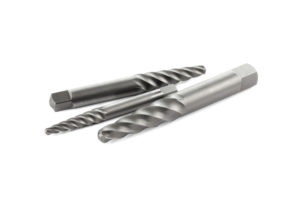 Screws are extremely useful tools in our daily lives. They’ve been around for many, many years. In fact, early screws had to be handmade, so each one was different from the one before it. In 1928, the National Screw Thread Commission established a standard for screw threads for interchangeability.
Screws are extremely useful tools in our daily lives. They’ve been around for many, many years. In fact, early screws had to be handmade, so each one was different from the one before it. In 1928, the National Screw Thread Commission established a standard for screw threads for interchangeability.
Check out our EZ Screw Builder to build your custom screw!
Screws hold our phones together, our computers together, and even help to hold our homes together. Without screws, it’d be very hard to complete everyday tasks. Imagine what would happen if the screw you relied on were to suddenly break. You might get worried that it’ll damage whatever it was holding together. However, you don’t have to worry about a screw getting stuck inside. There are a few things that can be done to remove the screw.
First, you have the option to drill out the stuck or broken screw. You’ll need to drill a hole in the middle of the broken or damaged piece. Doing this will allow for you to completely drill the screw out of its place. This way of removal is easiest when done on metal. If you’re trying to do it with wood, you can drill it through, but it’ll need to be replaced with a much larger screw. While this method is successful, it can also be very tricky.
If you find that the drilling method is way too complicated, using an extractor is a great alternative. The extractor will be able to easily remove it from it’s home. You can do this with large screw heads, small screws, or any sized screw, really. You can find an extractor at your local hardware store for a very inexpensive price.
When learning how to use a screw extractor, your first step is much like the one for drilling out the screw. You’ll need to drill a hole directly in the middle of the screw head. If the screw isn’t staying steady and moving around a lot, you can switch your drill bit to one that is much smaller. This will help to make sure that the piece you’re trying to remove stays in place. Next, take the extractor and place it inside the newly made hole. You can use a hammer to lightly tap it into place. Then, push down the extractor and turn it counterclockwise, loosening up the screw and allowing the removal.
If you notice that the extractor just isn’t cutting it, you can take a heat gun to the area to try and loosen the miniature screws from the port. If the tiny screw heads are set in metal, soak it in a lubricant for about 30 minutes. Once these helpful tricks have been completed, take the extractor and try removing it once more.
Broken screws don’t have to be the end of the world. Using things like a screw removal tool can really help save your project and help you to continue with your day.

 Screws are extremely useful tools in our daily lives. They’ve been around for many, many years. In fact, early screws had to be handmade, so each one was different from the one before it. In 1928, the National Screw Thread Commission established a standard for screw threads for interchangeability.
Screws are extremely useful tools in our daily lives. They’ve been around for many, many years. In fact, early screws had to be handmade, so each one was different from the one before it. In 1928, the National Screw Thread Commission established a standard for screw threads for interchangeability.